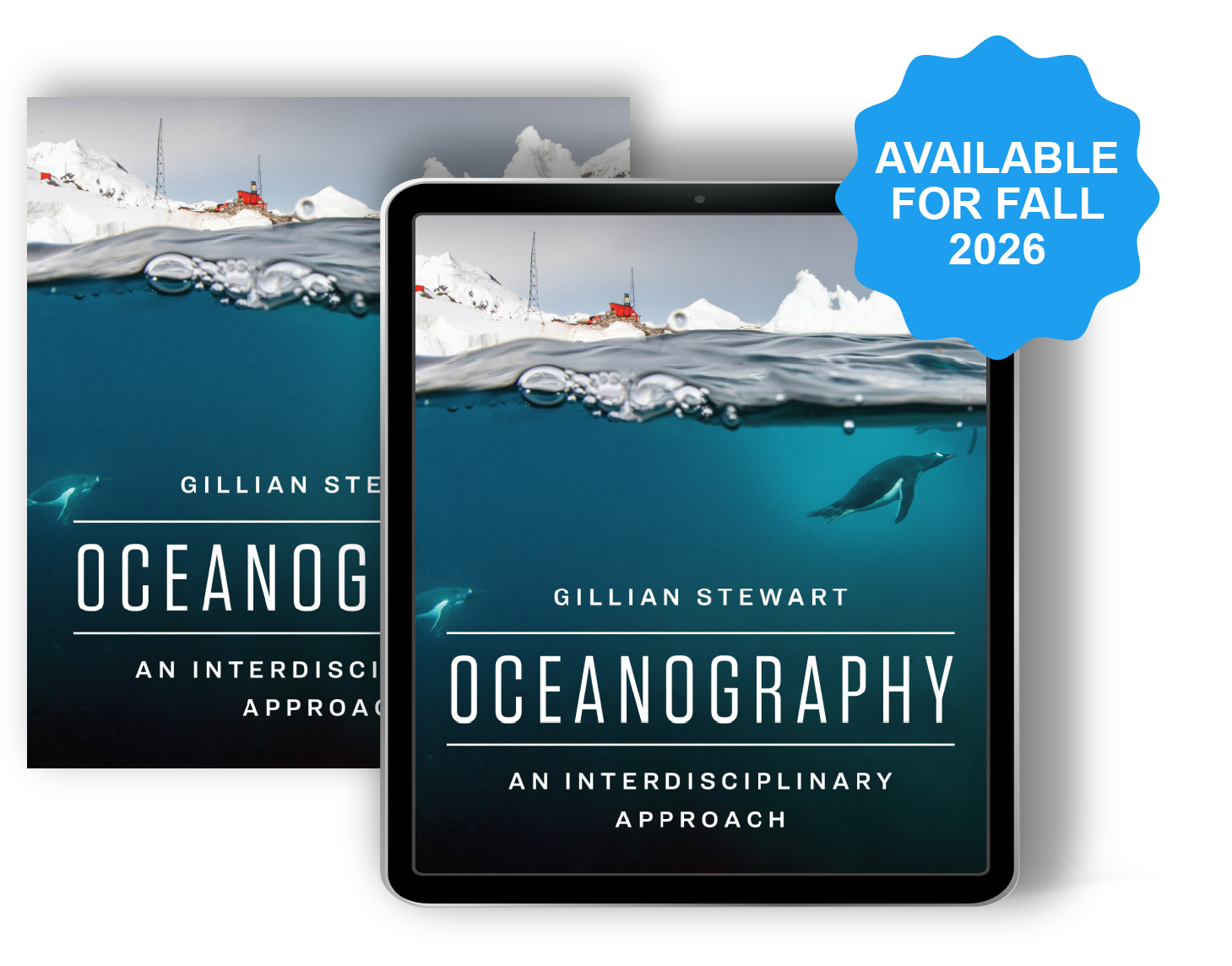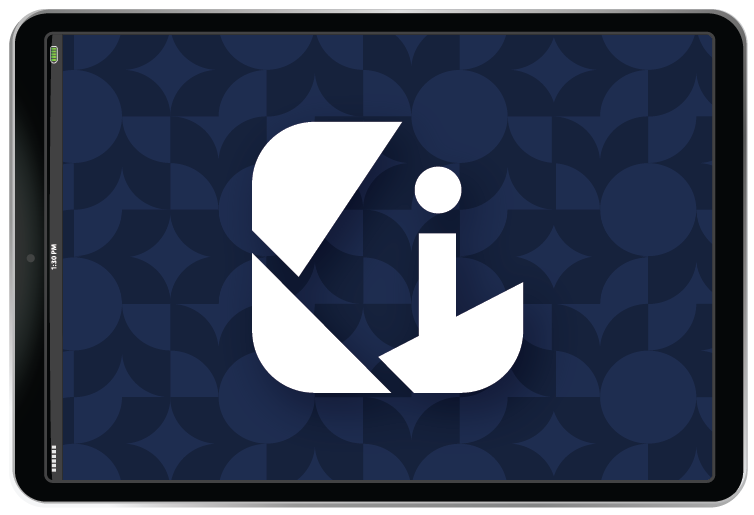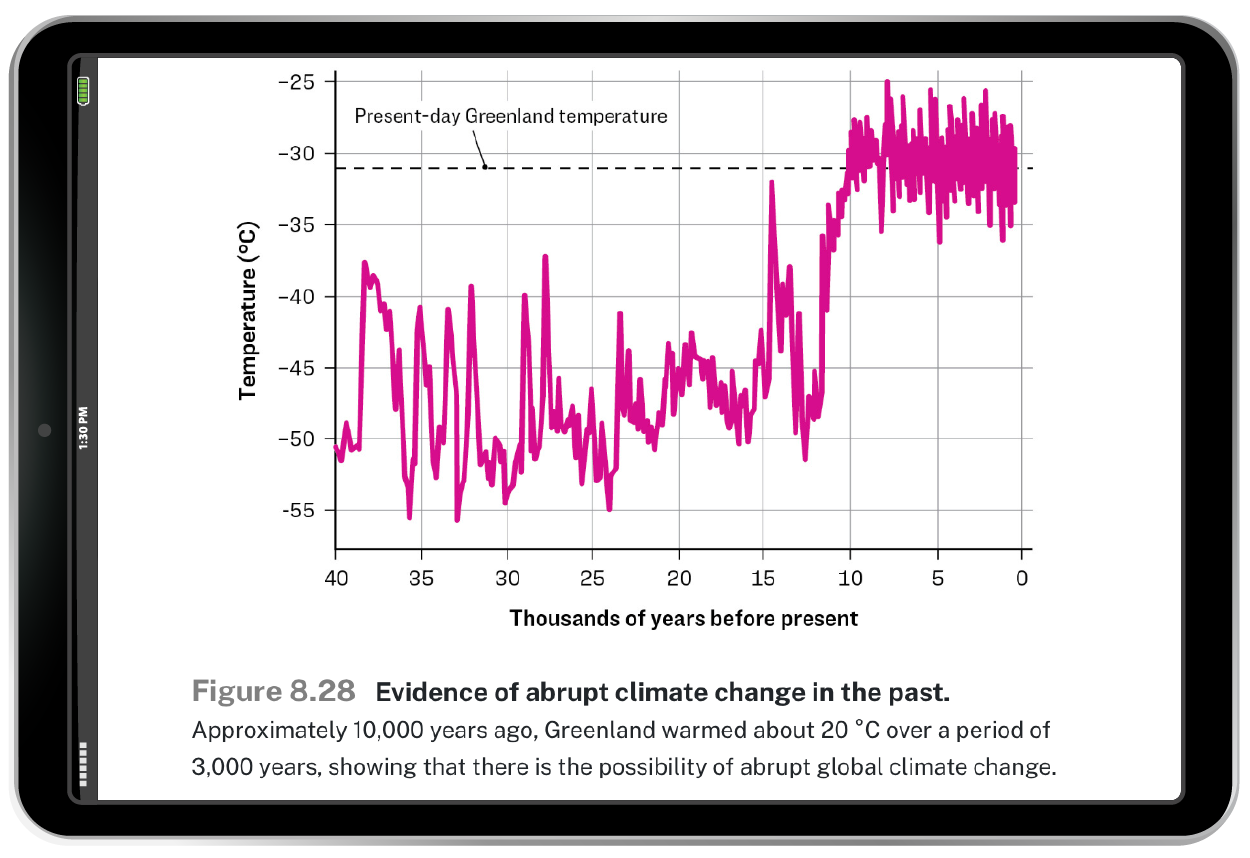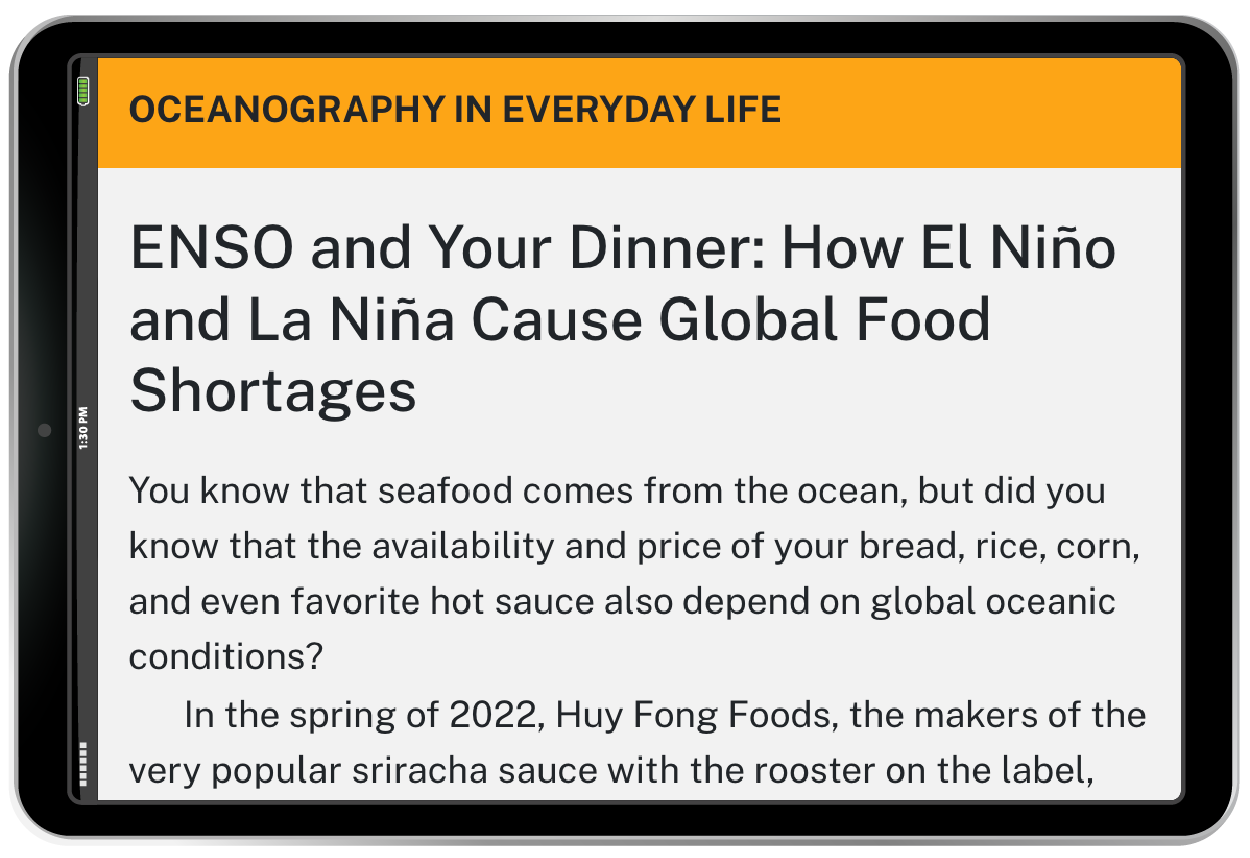

Immerse students in the wonder and importance of the ocean—from the global to the personal
Give your students a textbook they’ll actually read

With climate change as a theme, every aspect of Oceanography: An Interdisciplinary Approach is designed to help modern students better understand our ocean in context. This First Edition leverages how students learn best—through interactive features, storytelling, and drawing connections—to engage them with the interconnected world of our planet’s most vast entity.
Makes science accessible and engaging for non-science majors
Gillian Stewart is determined to make it easier to engage introductory oceanography students. With gripping stories and an easy-to-follow narrative, this text makes unfamiliar material more approachable, no matter students’ backgrounds.

Climate change coverage is integrated throughout the book
Instead of appearing as a capstone chapter, climate change is introduced in Chapter 1 and revisited throughout the text to connect ocean processes to larger global impacts and feedback loops.

Emphasizes the relevance of the ocean to the real world
In each chapter, “Oceanography in Everyday Life” features connect ocean processes to students’ lives and interests. These demonstrate that the ocean has impacted students, no matter where they live on the planet.

Gillian Stewart (Queens College)
Gillian brings over two decades of experience teaching diverse student populations. This book was created from her own teaching challenges, which include helping students appreciate the ocean, engage with science concepts, and see the connections oceanography has to their lives and to the world around them.
Hear more from Gillian:
Instructors, get access to a preview of the ebook and online resources
Prefer a paperback copy instead?


Meet Your Marketing Manager: Courtney Zanosky
Hi! I'm Courtney. I'm in my eighth year with Norton, and I continue to find myself fueled by the desire to connect instructors with the most perfect resources for their unique courses and needs.
Though I now live on the Western Slope of Colorado, exploring the mountains and high desert, I spent my childhood days playing in the Atlantic along the Jersey Shore and most of my twenties awe-struck by the beauty of the Pacific along the coast of Southern California. While I've always felt humbled in her presence, I never fully understood the sheer power, purpose, and complexity of the ocean until getting the pleasure of working with Gillian to promote this First Edition.
I can't wait to chat with you about this book and all the cool things you're doing in your classes! Feel free to respond and say "Hi!" when you see my name in your inbox this year. 😉

Copyright © W. W. Norton & Company, Inc. 2026







